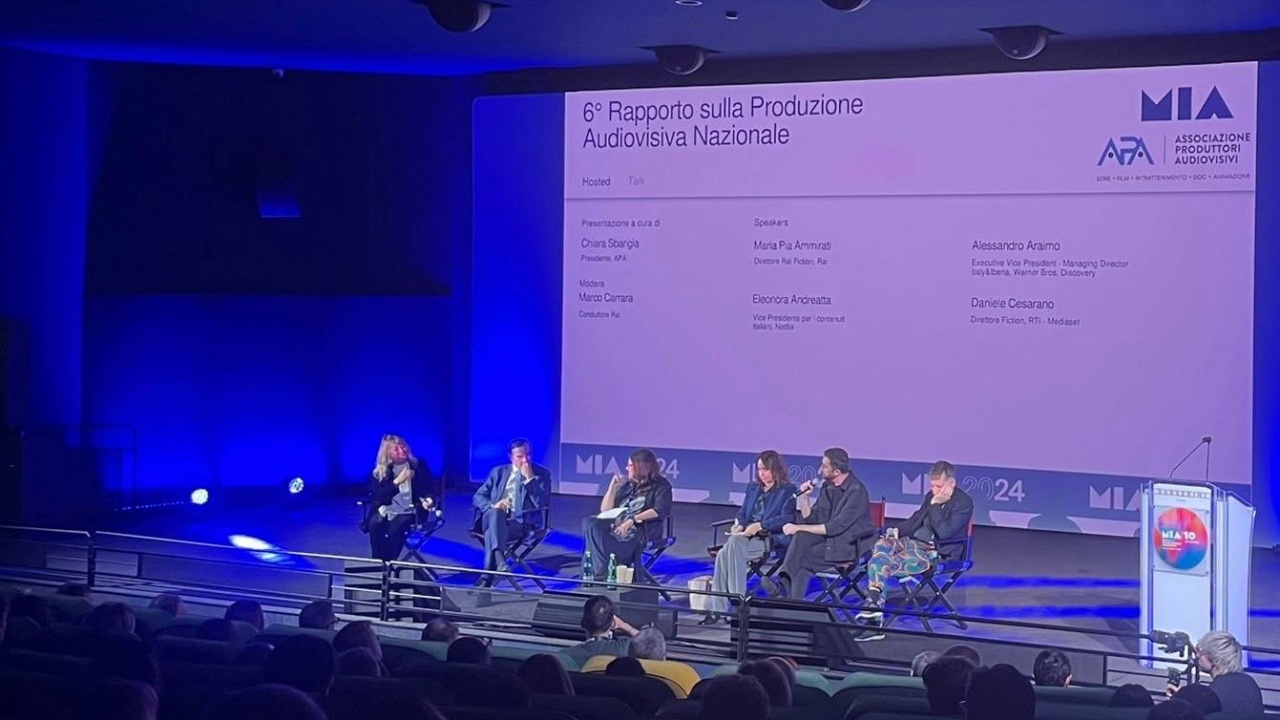During the second day of MIA | International Audiovisual Market The 6th Report on National Audiovisual Production was presented. The event was moderated by Rai host Marco Carrara.
The document, published by APA (Associazione Produttori Audiovisivi), is a fundamental tool for the audiovisual industry, as well as a lens through which to see the dynamics taking place in the sector and predict future developments.
A market that has been following a constant positive trend since 2017 with an average annual growth of 11.6% and the value of production rising from 1bn to 2bn in 2023. Market growth brings with it opportunities and challenges, both of which must be seized in order to be competitive.
As Chiara Sbarigia, President of APA, emphasises, ‘Starting this year, the content production sector is entering a new phase: as part of a general consolidation, projects must be selected more and product quality assessed to create international appeal’, then adds, ‘We have strong growth in content for children and pre-adolescents (…) which represent an increasingly relevant segment, as they also drive international productions’. And competitiveness on the global market is also the subject of the speech by Maria Pia Ammirati, Director of Rai Fiction, who, on the TV side, says: ‘How we compare ourselves with European and foreign countries is the most important issue addressed in recent years: we must not make a domestic product but a narrative product that goes beyond Italian borders. It means taking our identity production abroad’. The numbers of the report that Ammirati takes up, confirms the growth of what is considered the main channel of the audiovisual industry: ‘Today we have two important pieces of news: television is not dead and that seriality and production do not stop, we continue to produce with an 11% annual growth rate’.
The report’s positive data brings with it different reflections, in which the audience is always central. Eleonora Andreatta, Vicepresidente per i contenuti Italiani di Netflix, highlights the need to create content that corresponds to the needs of a demanding audience: ‘The large number of stories in the pipeline is to satisfy an articulated demand, in which the audience wants to feel represented. For us, this is crucial,’ he adds: ’We are in a third phase where we feel that competing for the attention of an audience that is experienced and demanding only happens through the quality of the product. We compete with the best stories in Europe and the world, and always and today more than ever quality is our drive’.
Alessandro Araimo, Executive Vice President – Managing Director Italy&Iberia, Warner Bros. Discovery, further underlines the issue: My impression is that the change that is taking place is that we have an audience that is more and more aware of the offer and more and more in search of specific content, we realise for several reasons then this is due to the technological aspect that is becoming more common not only among young people but also among more mature audiences, the publisher has to know how to distribute his content in the widest possible way with the awareness of having to convince his audience. It’s so easy to change platforms that it has become difficult to firmly channel the audience’s attention. Thanks to the evolution of Smart TV, it will be more the content offered to the consumer than the platform that will be important.
Daniele Cesarano, Direttore Fiction, RTI- Mediaset closed the panel by saying: ‘The most interesting thing is that the paradigm has changed in recent years: we used to be a generalist TV that aspired to family co-viewing.The radical change in the way a product is used has meant that generalism pays less’.Then, he continued, ‘One of our objectives in recent years has been to stabilise the production of Mediaset fiction for both the public and the industry. We are happy to have confirmed this in recent years’.

